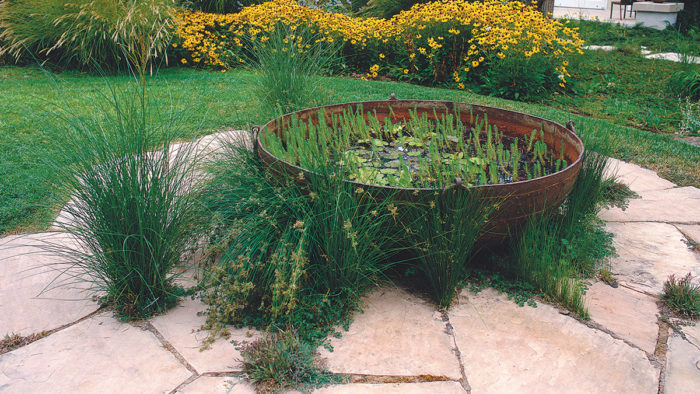
Nearly everyone loves water features. They make hot days seem just a little bit cooler. They reflect the sky and colorful fall leaves. They attract wildlife. And even the tiniest fountain can offer a soothing sound to drown out neighborhood noise. There’s a water feature suitable for any size garden. Whether it’s a tiny container water garden, a constructed waterfall, or a soothing fish pond, a water feature can make your garden more inviting.
My first water garden was a container water garden—a large fiberglass pot filled with water and five 1-gallon pots of plants. Since then, I’ve graduated to a 4-foot cattle trough with an assortment of water plants staged on bricks stacked at different heights.
Seattle landscape architect Keith Geller likes to fill large ceramic containers with water, which he places to mark the entry into a new garden room. Often, they’ll include small floating plants for added interest.
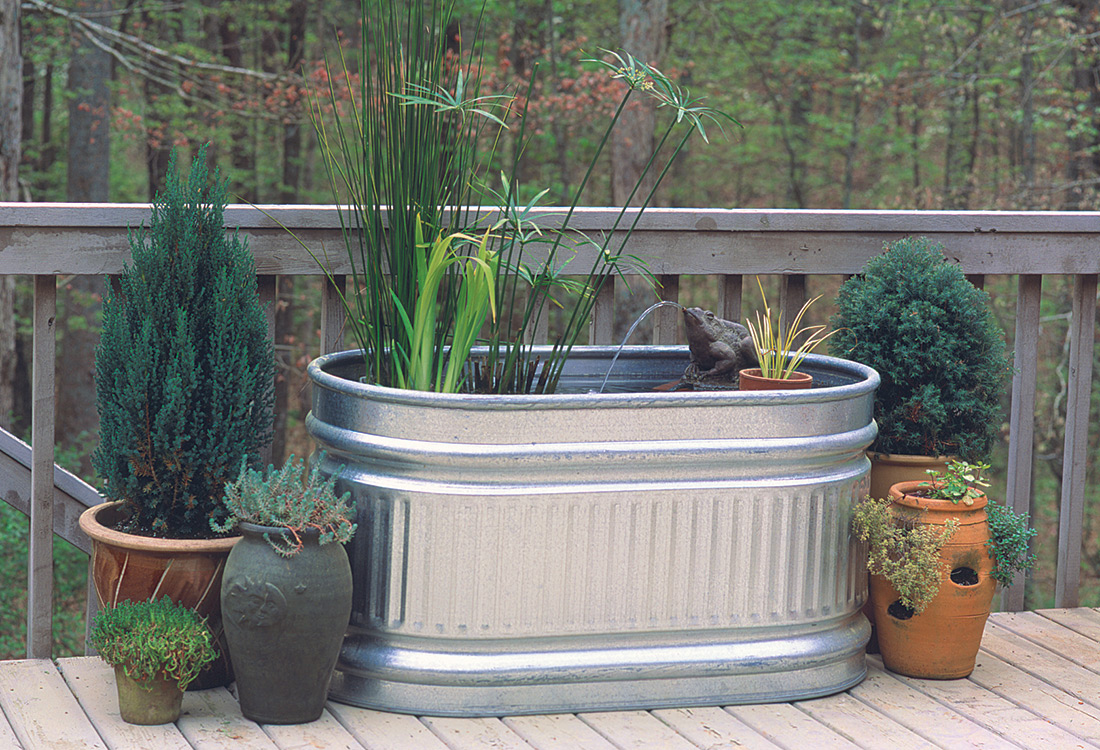
Basically, anything that holds water is fair game for a container water garden. It can be small enough to sit on a tabletop or as big as a barrel or trough. The secret is to find a pot without holes in the bottom, or to plug any holes so the water won’t drain out. Add some plants, and some fish, too, if you like. If you want the sound of trickling water, place a small, submersible pump in the bottom of your container. These are low-voltage, waterproof units, and all you have to do is plug them into a nearby outlet. They recycle water through the pump and through a “jet” tube that can be topped with various heads for different fountain effects.
Ponds, streams, and waterfalls
One of my favorite childhood memories is feeding the goldfish in my grandmother’s pond on Sunday afternoons. While some gardeners are fortunate enough to have natural ponds, streams, and waterfalls on their property, most of us, like my grandmother, have to create them from scratch. Hers was about the size of a child’s play pool, edged in mortared stone.

Longue Vue Gardens, in New Orleans, is a water-feature fantasyland of sorts. Among its many water features is a quiet fish pond tucked among azaleas, much like the one I remember at my grandmother’s house, though a bit larger. Another is a stream that tumbles down some rocks like a miniature waterfall into a pond below.
California landscape architect Jeni Webber often creates ponds and waterfalls for her clients; one of my favorites is in Fran Delageane’s garden in Berkeley. It is built from stacked stone, with a series of “falls” that empty into small pools. Some of the pools are linked by streams, while planting pockets have been created all around them. The water garden is illuminated to make outdoor evenings on the adjacent terrace inviting.
Reflecting pools and runnels
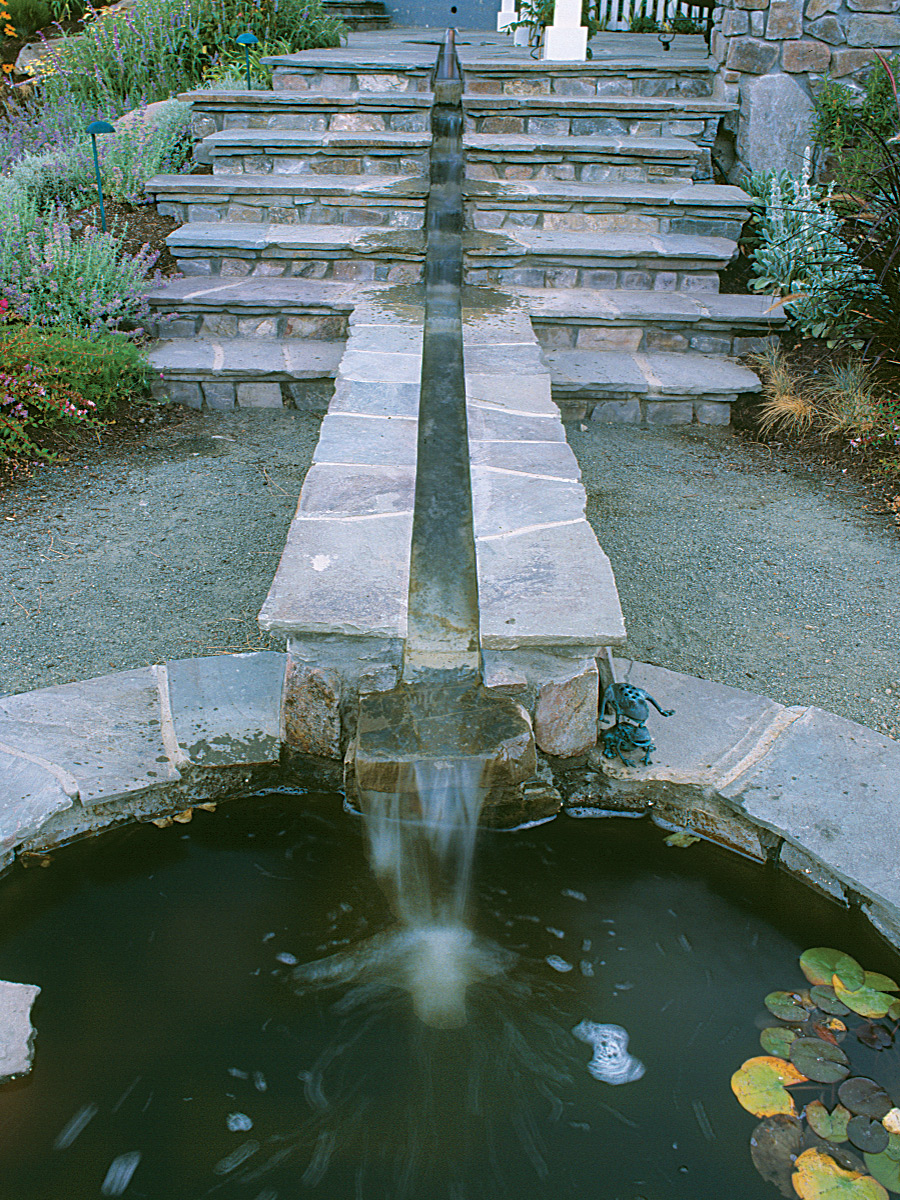
Runnels (also called rills) are constructed watercourses—usually straight and narrow—that often originate at a fountain and spill into a pond, though they can also wind like a river through your property. California landscape architect Warren Simmonds designed a runnel for a garden in Larkspur, California, that starts at a small, spouting fountain on an upper terrace, cascades down some steps, and spills into a stacked-stone pool in the garden below. Reflecting pools are just that—still pools that reflect whatever is around them on a still, sunny day. Of course, a natural pond without running water will reflect just as much as a rectangular pool edged in slate. Architectural features can be striking reflected in water, and so can trees and shrubs showing off their spring flowers or fall foliage. Just remember to avoid complete shade around a reflecting pool, as it’s the sun that brings out the strongest reflections. And the darker the pool, the better the reflection, so consider painting it black on the inside.
Fountains, big and small

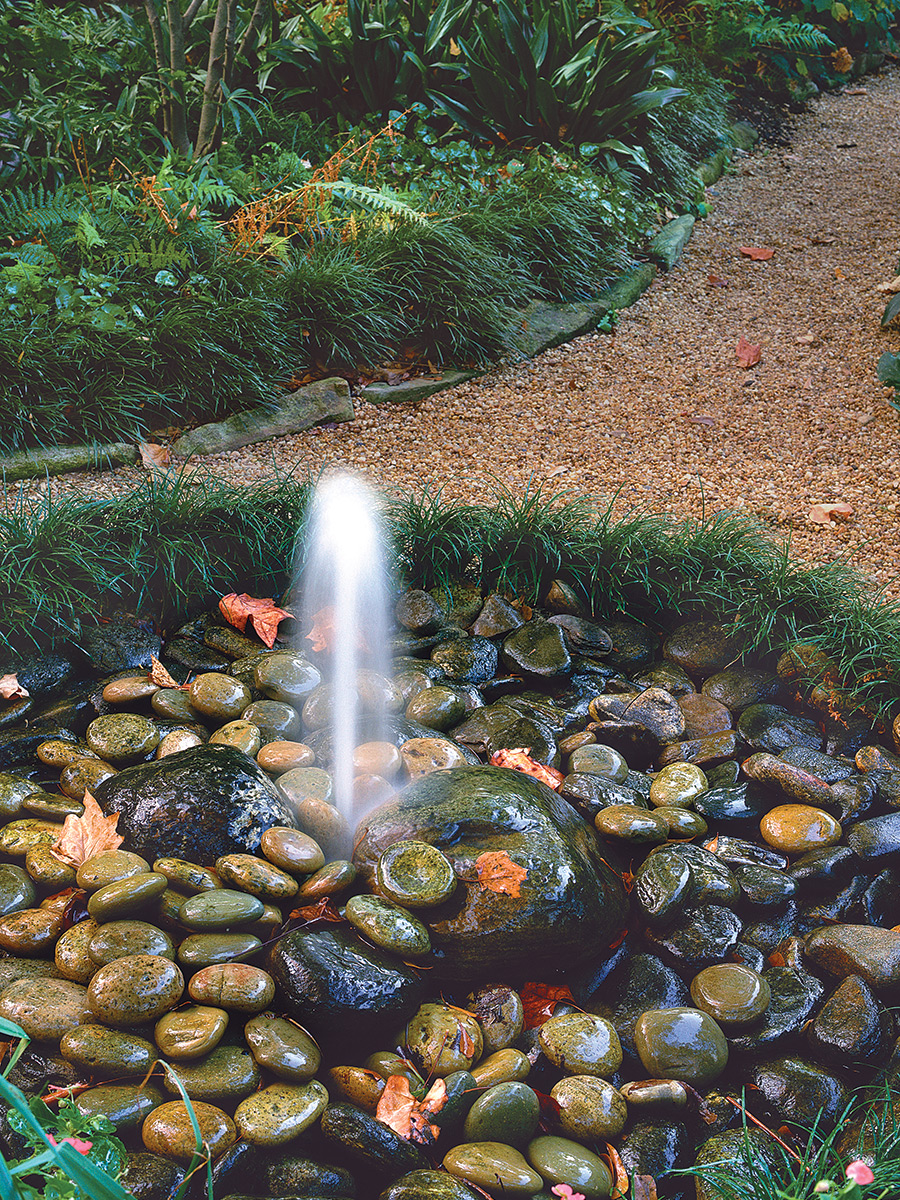
Formal fountains were common in classic European gardens and made their way into America’s grand estate gardens. In fact, they were often the focal point, anchoring an elaborate boxwood parterre, knot garden, or expanse of lawn. However, much simpler fountains suit most American homes today. Old millstones, round balls, and pedestals are often converted into bubbling fountains, like the birdbath located in Sydney Eddison’s garden in Newtown, Connecticut; it entertains guests having tea on the terrace as much as it does the birds. A collection of polished river stones in landscape architect David Ellis’s Atlanta garden looks nice when there’s water tumbling over its surface like fresh water bubbling up from a natural spring.
Wall fountains are a great solution for a small space, an entry garden, or a walled courtyard. These can be single units or fountains that spill into troughs or pools. They may also be as simple as a tile spout that funnels water into a cistern, like the one at Venzano, a former monastery turned bed and breakfast, in Tuscany.
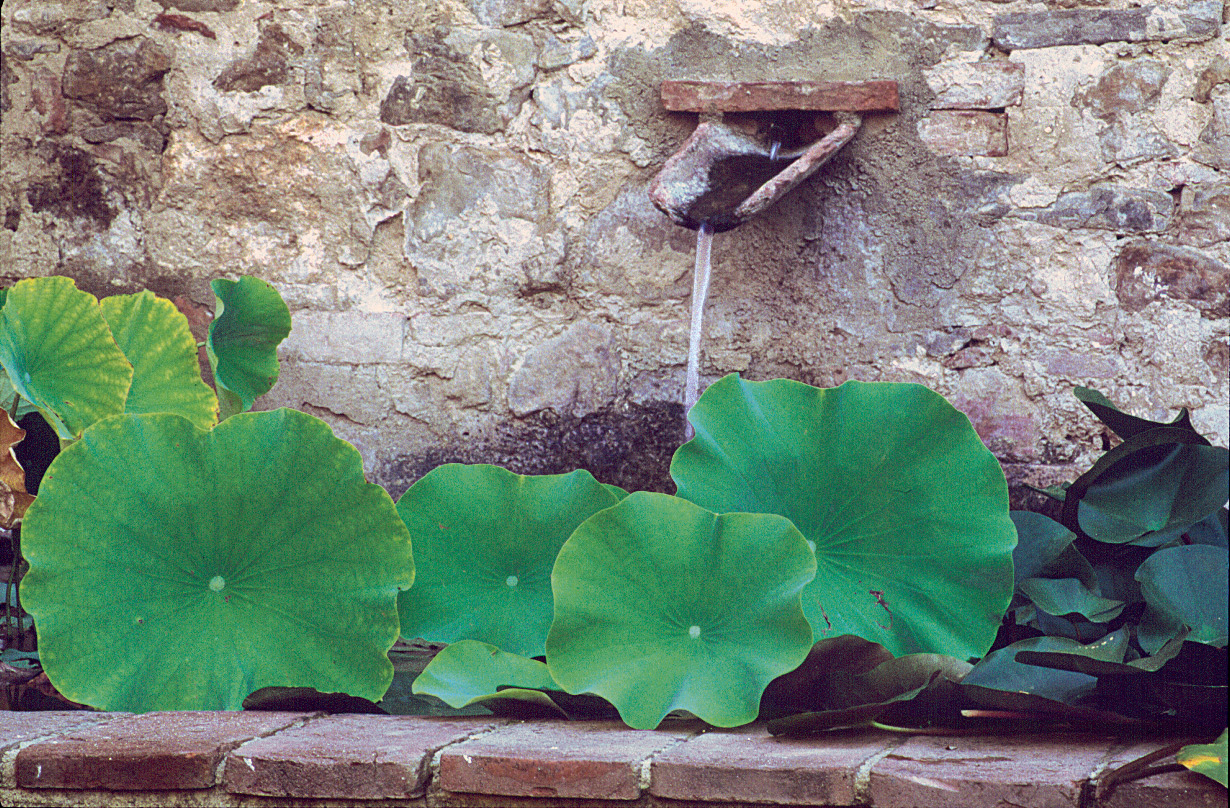
Bubbling urns are common in even the most modest gardens. In Atlanta, Dan Cleveland and Jeffrey Rogerson have just such a water feature in their intimate backyard garden. In addition to a bubbling urn, there are two sculpted herons surrounded by an abundance of lush plantings.
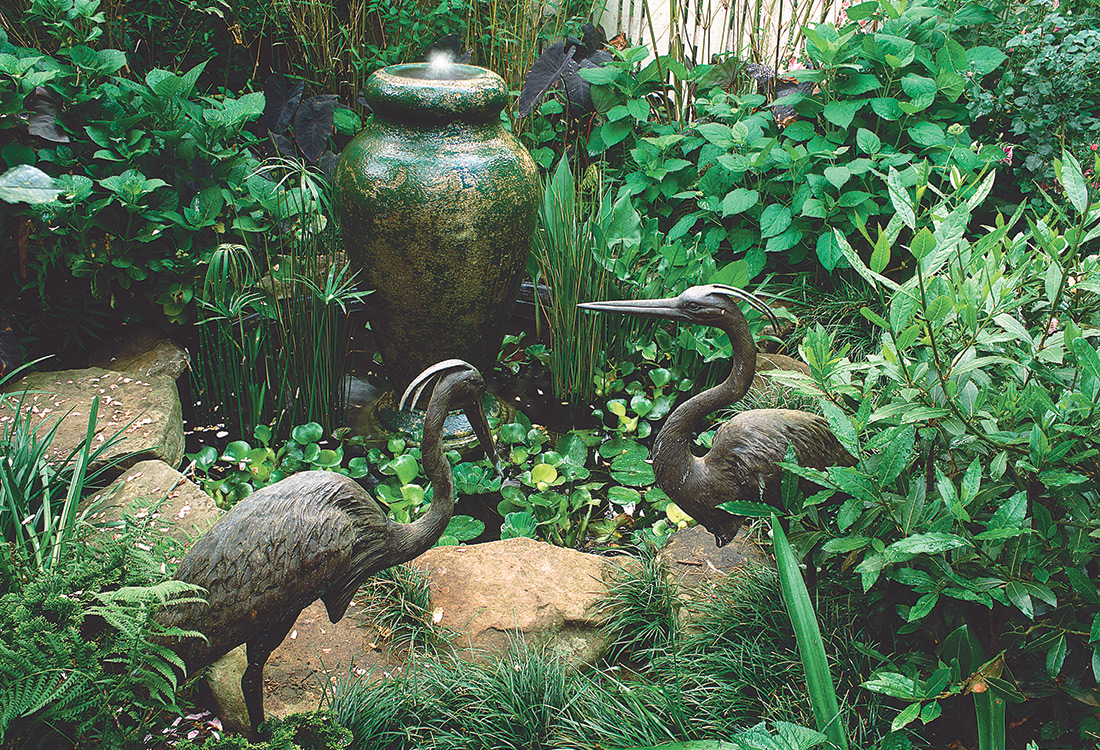
Whether it’s a naturalistic waterfall and pond, a quiet reflecting pool, or a fishpond for the grandkids, there’s a perfect water feature for every garden. Start by thinking of your favorite water features—a quiet mountain stream, a formal reflecting pond, or perhaps an old, moss-covered urn trickling with water—and experiment with ways they can enhance your own garden.
Water adds atmosphere with sound, texture, and color
Sound is one of the water’s greatest attractions—the patter of rainfall on a tin roof, the soft gurgle of a stream, the roar of a waterfall. Just think of all the words we have to describe the sound of water: drip, splash, slosh, bubble, lap, trickle. Yet sometimes it’s the serenity of water we love most—the mist over a mountain lake on a cool, still morning.
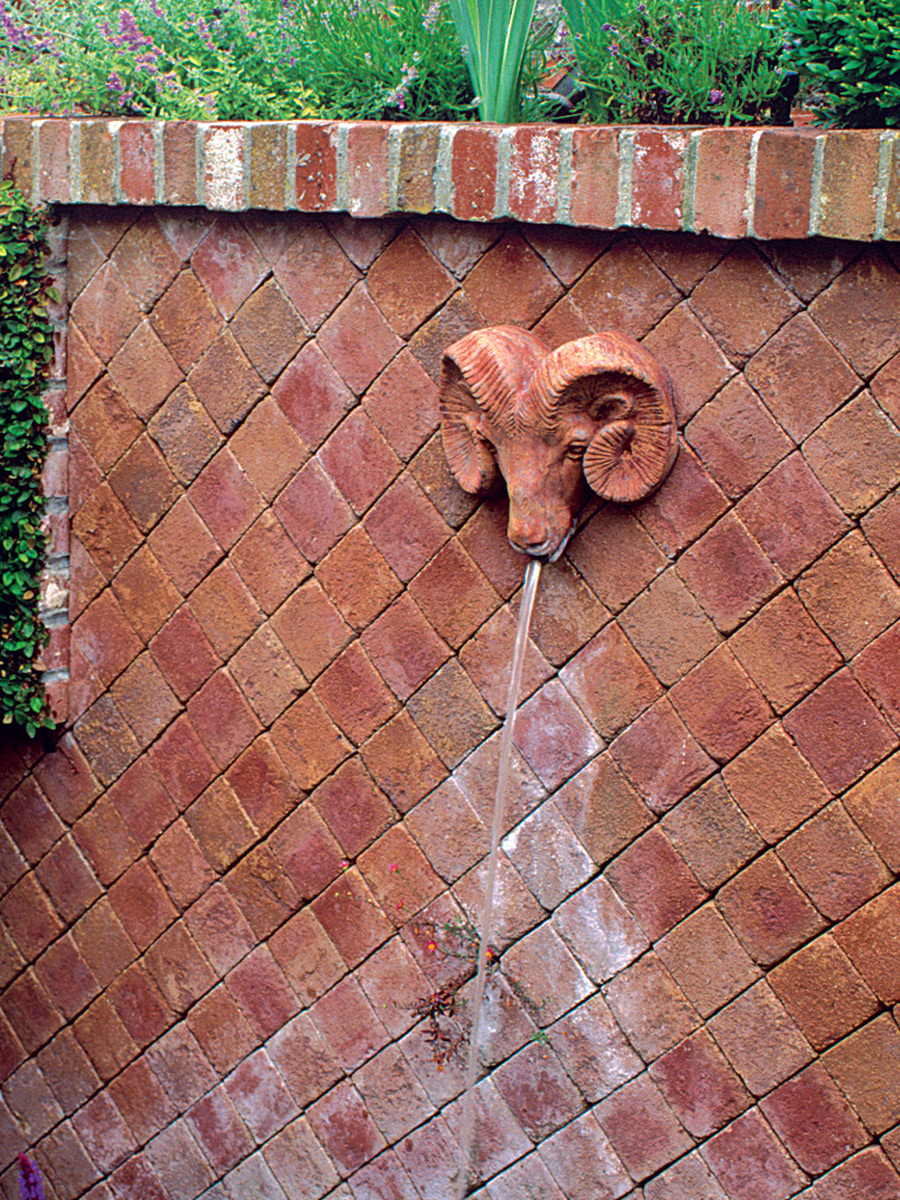
Water also has texture. Imagine the smooth, glassy surface of a pool in a protected area, a single droplet of water falling into that pool, with a circle forming on the surface and spreading outward. Envision a strong wind blowing ripples across the pool’s surface, or a steady stream of water cascading from above, churning at the point of entry.
Water can also be colorful. Or perhaps it’s better to say that it carries color, as it might when washing red clay into a pond after a heavy rain storm. It reflects color from the surrounding sky, buildings, and plantings. It appears the color of its surroundings, for example blackwater swamps and blue swimming pools.
Water creates mood with sound, texture, and color. It can make you feel relaxed or energized. Step from a busy street into a courtyard with a trickling fountain and feel your blood pressure drop. Consider the difference in mood created by bright reflections of flowers in a pond on a sunny fall day and mist rising from a stream on a chilly morning. Let your senses take you to distant places. A blue pool surrounded by tender perennials can ease you into dreaming of the tropics, and a fishpond may call up childhood memories, while a tiered fountain reminds you of a trip to Italy.


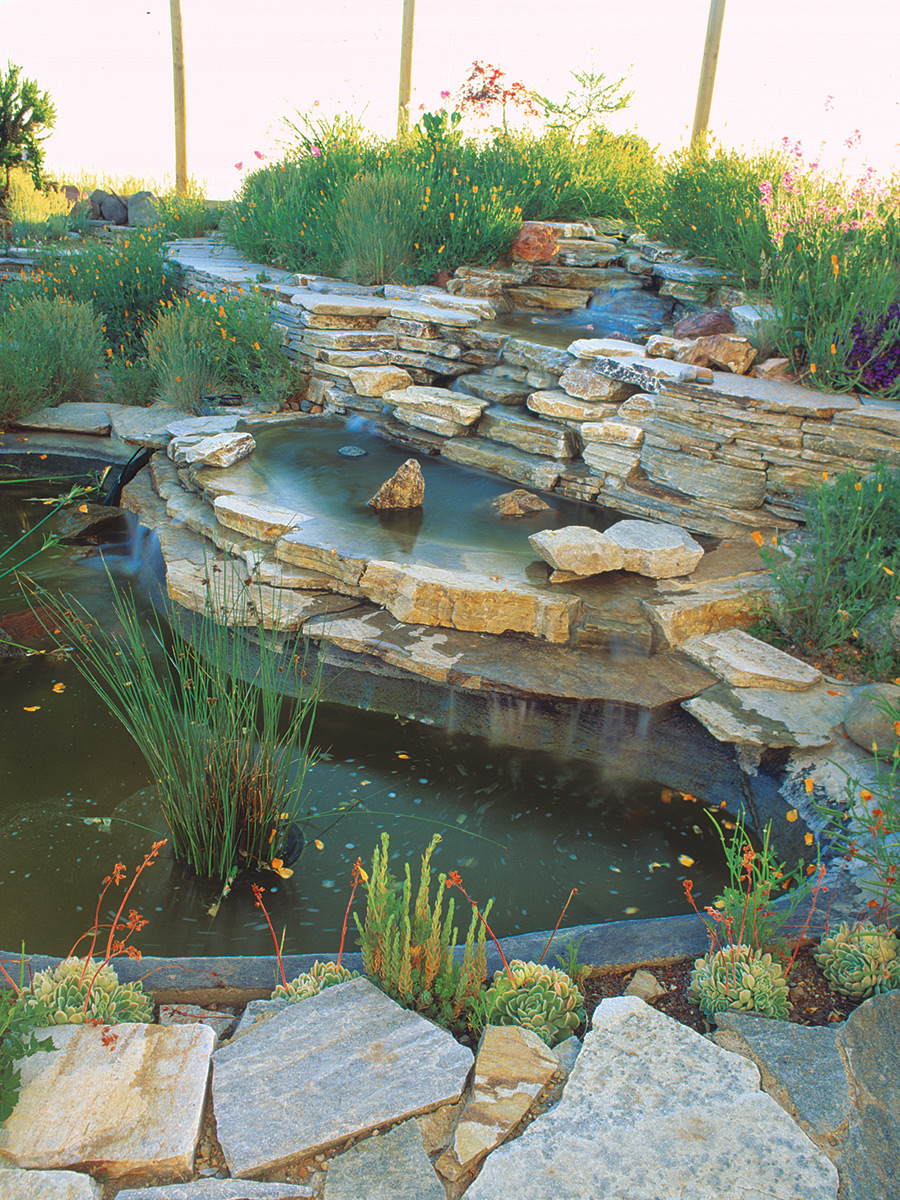
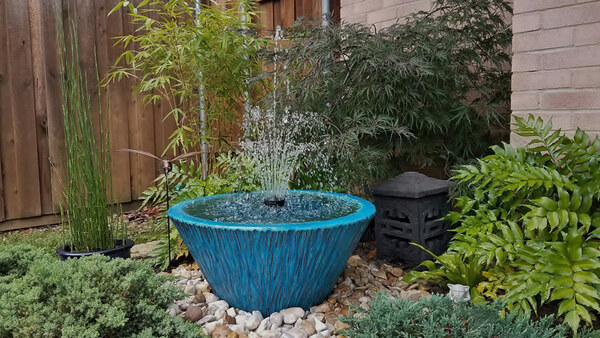
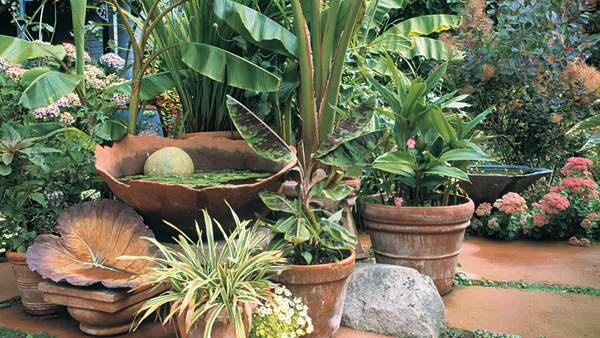
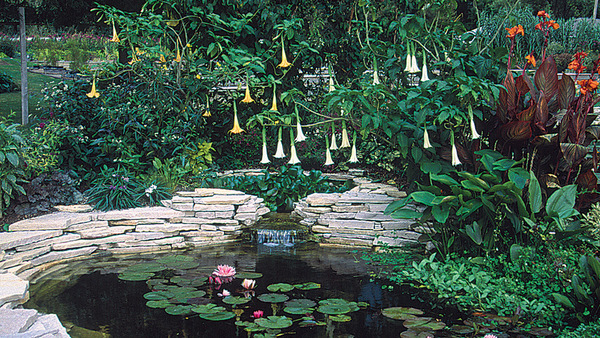
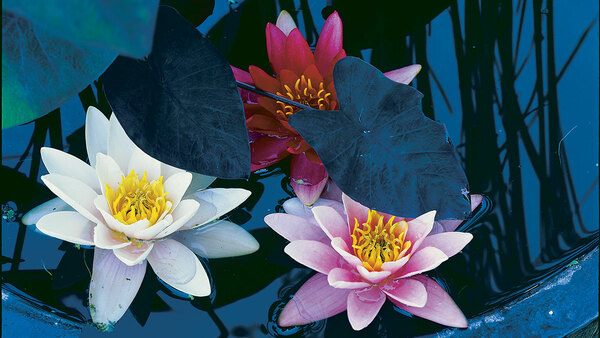












Comments
Great post. Keep it up!
If you were facing trouble to change your ringtone in windows 10 mobile then just from here get the easiest method to change ringtone in windows 10 mobile in few steps without wasting your time.
Yes, I am also agreed with your ideas regarding gardening beautification!It's really amazing to see how made it change with waterworks in the garden.I like fountain waterworks most, but It could be installed according to the size and area of the garden.I am a interior and exterior designer beside my freelance writing job here https://eduzaurus.com/free-essay-samples/cyber-bullying/ for making different essay samples for the students as well as others.You waterworks ideas will give me support in my profession with writing and designing home!
Beautifully elaborated! I think distance education has many benefits not only for disabled people but also for other students in the time of pandemic that has stricken the globe severely. So, I found this https://uk.bestessays.com/nursing-essay.html article for my online exam preparation as well.
Log in or create an account to post a comment.
Sign up Log in